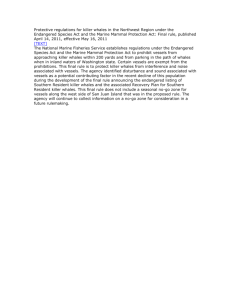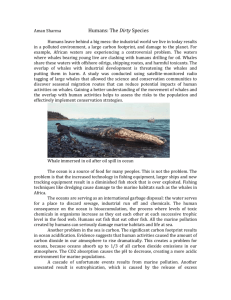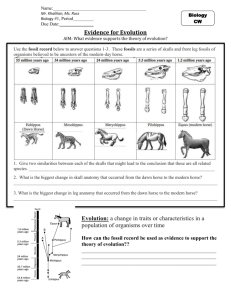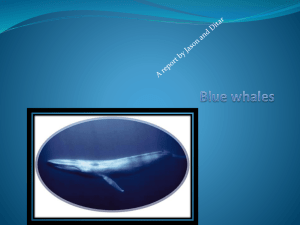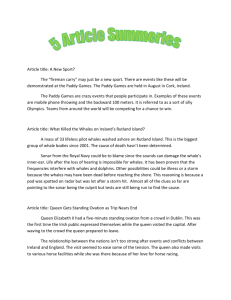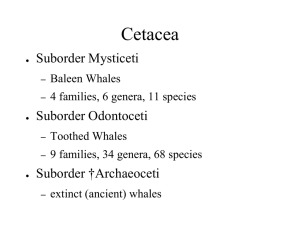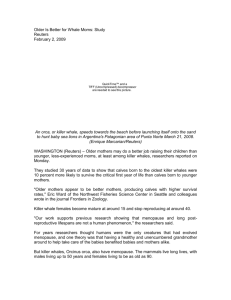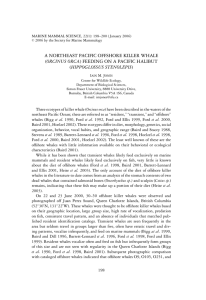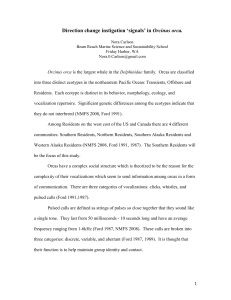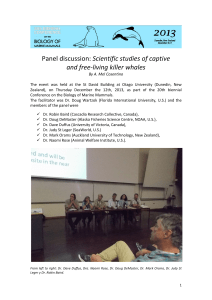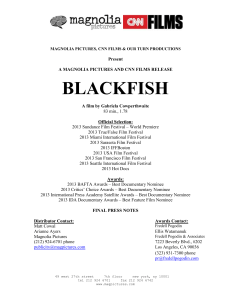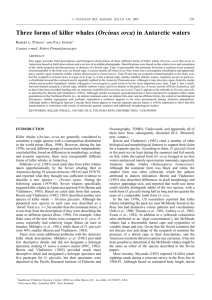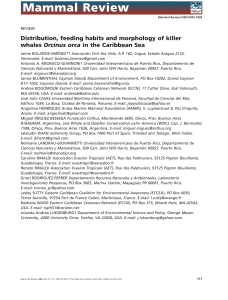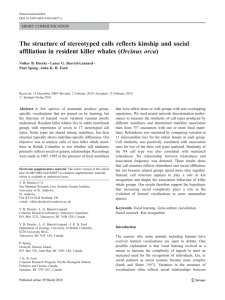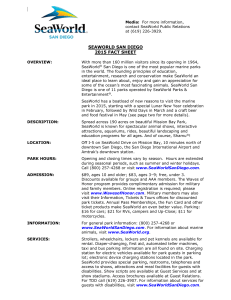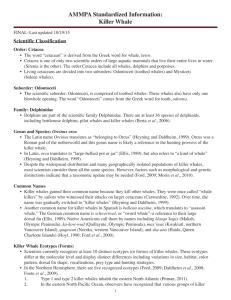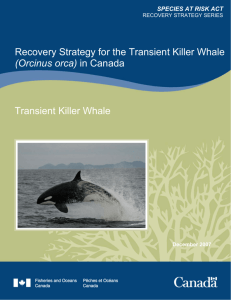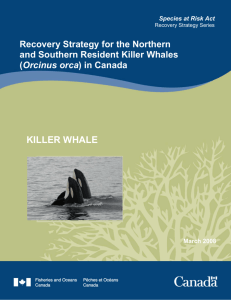scientists find experimental support for killer whales` ability to learn
advertisement
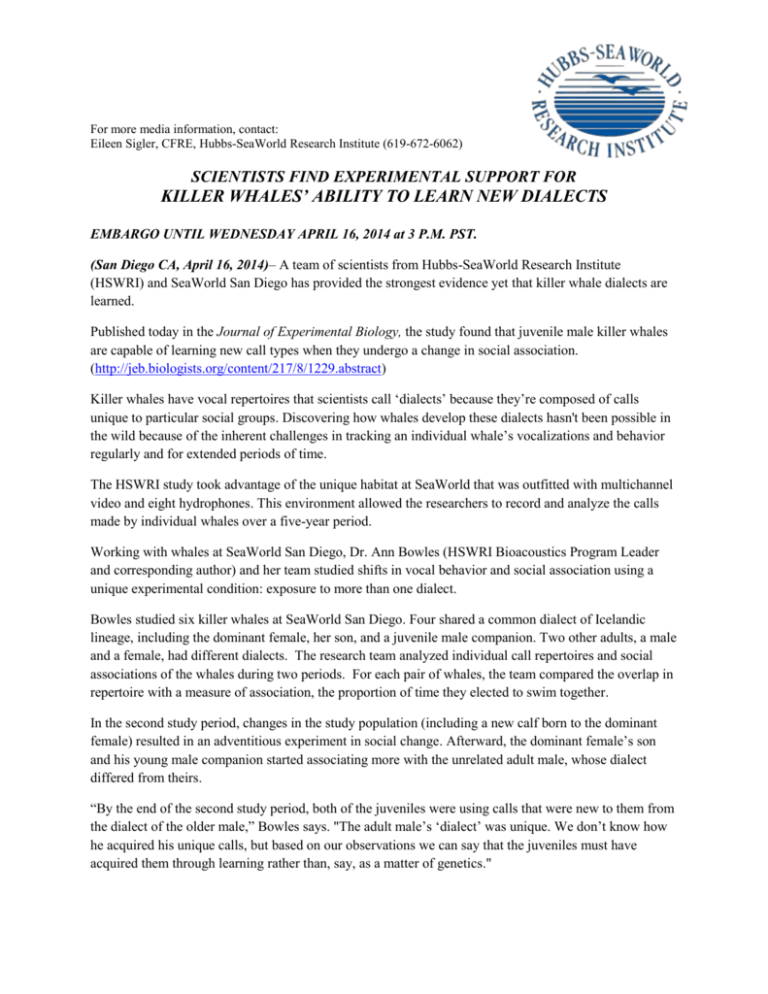
For more media information, contact: Eileen Sigler, CFRE, Hubbs-SeaWorld Research Institute (619-672-6062) SCIENTISTS FIND EXPERIMENTAL SUPPORT FOR KILLER WHALES’ ABILITY TO LEARN NEW DIALECTS EMBARGO UNTIL WEDNESDAY APRIL 16, 2014 at 3 P.M. PST. (San Diego CA, April 16, 2014)– A team of scientists from Hubbs-SeaWorld Research Institute (HSWRI) and SeaWorld San Diego has provided the strongest evidence yet that killer whale dialects are learned. Published today in the Journal of Experimental Biology, the study found that juvenile male killer whales are capable of learning new call types when they undergo a change in social association. (http://jeb.biologists.org/content/217/8/1229.abstract) Killer whales have vocal repertoires that scientists call ‘dialects’ because they’re composed of calls unique to particular social groups. Discovering how whales develop these dialects hasn't been possible in the wild because of the inherent challenges in tracking an individual whale’s vocalizations and behavior regularly and for extended periods of time. The HSWRI study took advantage of the unique habitat at SeaWorld that was outfitted with multichannel video and eight hydrophones. This environment allowed the researchers to record and analyze the calls made by individual whales over a five-year period. Working with whales at SeaWorld San Diego, Dr. Ann Bowles (HSWRI Bioacoustics Program Leader and corresponding author) and her team studied shifts in vocal behavior and social association using a unique experimental condition: exposure to more than one dialect. Bowles studied six killer whales at SeaWorld San Diego. Four shared a common dialect of Icelandic lineage, including the dominant female, her son, and a juvenile male companion. Two other adults, a male and a female, had different dialects. The research team analyzed individual call repertoires and social associations of the whales during two periods. For each pair of whales, the team compared the overlap in repertoire with a measure of association, the proportion of time they elected to swim together. In the second study period, changes in the study population (including a new calf born to the dominant female) resulted in an adventitious experiment in social change. Afterward, the dominant female’s son and his young male companion started associating more with the unrelated adult male, whose dialect differed from theirs. “By the end of the second study period, both of the juveniles were using calls that were new to them from the dialect of the older male,” Bowles says. "The adult male’s ‘dialect’ was unique. We don’t know how he acquired his unique calls, but based on our observations we can say that the juveniles must have acquired them through learning rather than, say, as a matter of genetics." This research also demonstrated that the juvenile males acquired their new calls after they started associating with the adult male, suggesting that learning was stimulated by the social change. The next step will be to evaluate other age-and sex-classes for evidence of changes in vocalizations with changes in association. "Truthfully, we're just taking the first baby steps in understanding how individual whales learn and who they learn from at various stages in their lives," says Bowles. There are deeper implications of this study. Learning whether social association affects the calls of killer whales sheds important light on how wild populations of whales interact. Scientists still don’t know if and how populations of killer whales can merge. The data from this study give clues about how that might occur. This project is part of a long-term effort to understand vocal development in killer whales. The research formed part of a master’s thesis project at the University of San Diego for one of Dr. Bowles’ students, Jessica Crance, the lead author, who is now a Research Biologist at the National Marine Mammal Laboratory in Seattle. Alan Garver, curator of animal training for SeaWorld San Diego, also participated in the study. About Hubbs-SeaWorld Research Institute Hubbs-SeaWorld Research Institute (HSWRI), founded in 1963 to conduct research in the tradition of world-renowned scientists Dr. Carl L. and Laura C. Hubbs, is an independent 501(c)3 public charity. The Institute’s scientists are dedicated to addressing the complex conservation challenges facing our oceans and coasts. Hubbs-SeaWorld Research Institute scientists seek effective solutions that protect and conserve marine animals and habitats while balancing the needs of humans and their reliance on marine resources. HSWRI also recognizes the critical importance of science literacy as a foundation for competing in the highly technical and competitive global economy and strives to provide innovative education programs for our children and young scientists. In 2013, HSWRI celebrated 50 years of its mission "to return to the sea some measure of the benefits derived from it." Information about Hubbs-SeaWorld Research Institute can be found at www.hswri.org.
